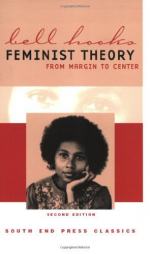
|
| Name: _________________________ | Period: ___________________ |
This quiz consists of 5 multiple choice and 5 short answer questions through Chapters 10 and 11.
Multiple Choice Questions
1. For the author, what perspective really changed the direction of feminist thought?
(a) Looking back at women's history.
(b) Creating women's studies departments in universities.
(c) Looking at the interlocking nature of race, class, and gender.
(d) Accepting men into the movement.
2. How did the group initially discussed by the author characterize parenthood?
(a) As a form of discipline.
(b) As a trap, another way the male patriarchy exercised its power.
(c) As a luxury.
(d) As a social duty to create future citizens.
3. How did early feminists, and society at the time, view housework?
(a) As something a woman cannot escape.
(b) As an ideal job.
(c) As demeaning.
(d) As relatively easy work.
4. Based on your understanding of the two Prefaces, who does the author wish to reach with her work?
(a) Women of color.
(b) Men.
(c) Mainly people who are brand new to feminism.
(d) As wide and diverse of an audience as possible.
5. What potential effect can feminism have on the family, in the author's view?
(a) It can draw attention away from the family towards more important things.
(b) It can undermine family stability.
(c) It can transform the family in very positive ways.
(d) It can help maintain the traditional structure of the Western family.
Short Answer Questions
1. What is the awareness about sexual oppression that the author advocates?
2. What change in attitudes towards work does the author propose in Chapter Seven.
3. Why does the author hold her particular beliefs about prioritizing struggles against different forms of prejudice?
4. Whose ideas in particular does she address?
5. How has the author's own perception of her book held up?
|
This section contains 444 words (approx. 2 pages at 300 words per page) |

|




